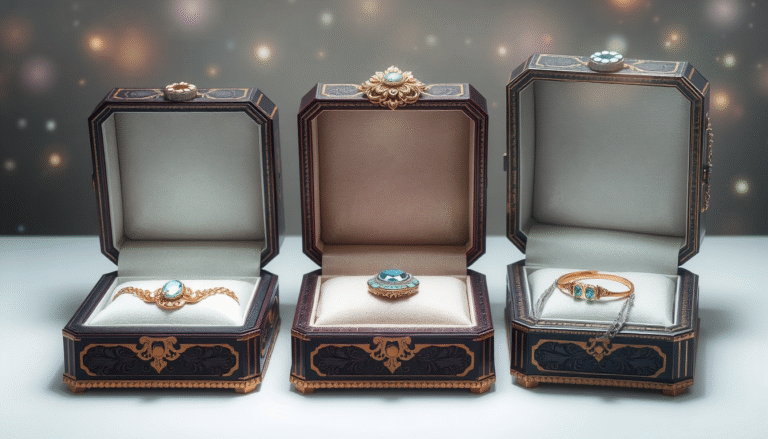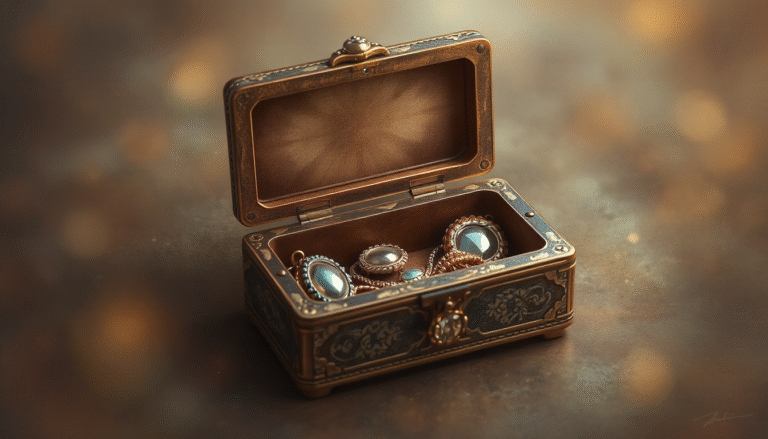Introduction: Beyond Protection – The Strategic Value of a Custom Jewelry Box
A jewelry box serves a purpose other than to safeguard an item of value. It makes for your brand’s first tangible touchpoint with your customer and forms a part of the larger brand experience.
In the competitive world of today, good packaging isn’t just an expense but an intelligent one. An exquisite custom jewelry box adds value to a purchase, and transforms the transaction into a unique unboxing experience the customer will always remember.
This thoughtful kind of packaging increases how valuable your product appears, makes you a more memorable company that customers want to support and it is extremely powerful in telling your brand’s story. Our guide will walk you through every step of building your perfect custom jewelry box, transforming the idea of the simple container into a tool that will help your business thrive.
The Anatomy of a Great Jewelry Box: Key Styles and Structures to Know
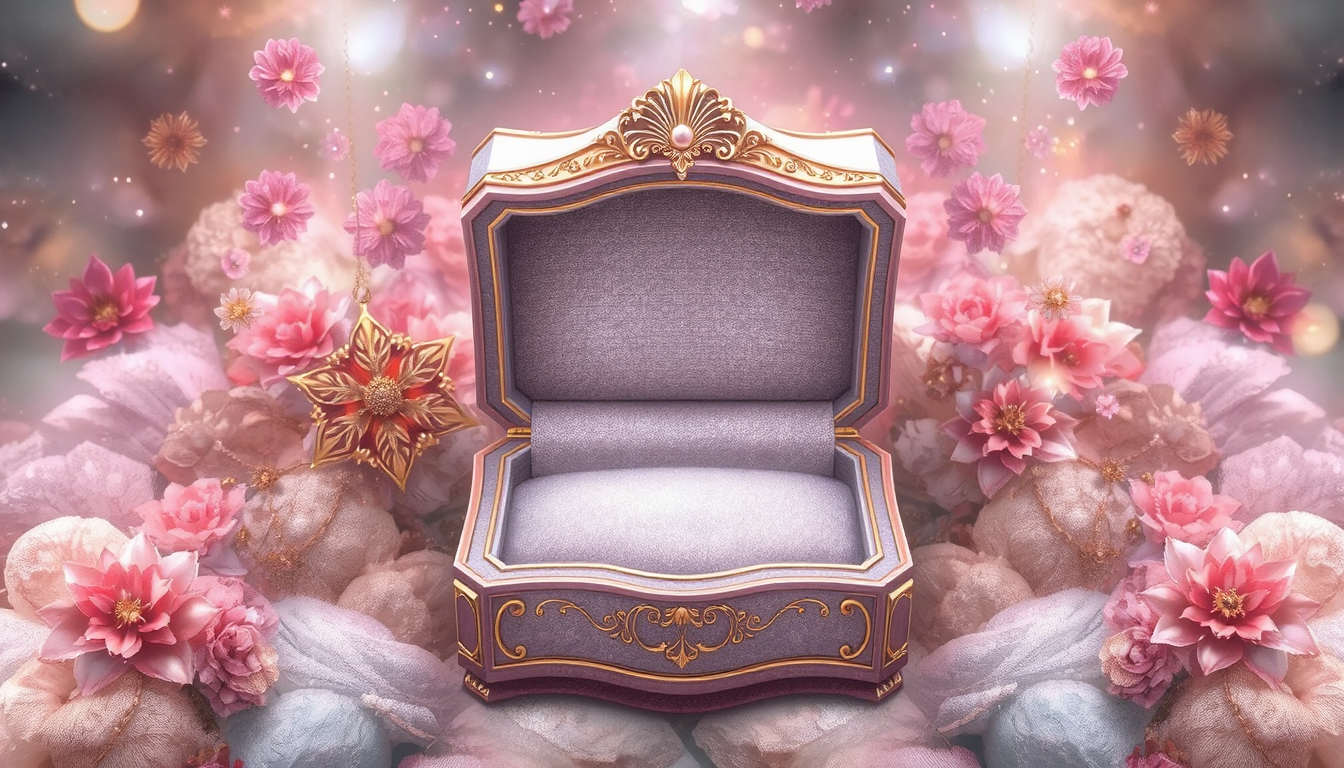
The first rule is knowing the basic box structures. It will not only match your jewelry set, but it will also be a unique unboxing moment for your customer.
We’ve outlined the major categories below to help you know what you’re asking for when speaking with manufacturers.
The Rigid Box / Two-Piece Box
-
Description: A sturdy dual layer “lid-off” game box made of a thick, hard material wrapped with quality paper stock. This is the classic box style that luxury brands such as Tiffany & Co. carry.
-
Best For: Engagement rings, high-end watches, statement necklaces, your luxury brand.
-
Pros: It’s fancy looking, offers good protection, will at least store well for awhile.
-
Cons: Costs more per box, requires more space in shipping and storage.
The Drawer Box (Sliding Box)
-
Description: Features an outer sleeve and a sliding inner tray (commonly provided with a ribbon tab) to pull the case out. It’s an exciting style and makes for a good reveal.
-
Best For: Thin braceletsEarring setsPendants. Excellent for creating a layered discovery experience.
-
Pros: Beautiful entry, unique user experience, nice real estate for branding on sleeve.
-
Cons:Could be insecure with very heavy items unless it’s the perfect fit.
The Hinged Lid Box (Clamshell)
-
Description: A Boxing design, composed by two halves connected by a spine, normally closed with magnets. It folds open like a book and has a premium feel.
-
Best For: Sets, brooches and luxury items when you desire a secure, hefty feel.
-
Pros: It’s extremely hardy, closes tight, has a good weight to it and feels very fancy.
-
Cons: More involved to pull together, so it can be more expensive.
The Collapsible Rigid Box
-
Description: Looks and feels like a traditional rigid box but ships and stores flat. The customer assembles it, usually with sticky strips.
-
Best For: Online businesses and brands against who don’t require a ton of space but still want a luxury look.
-
Pros: Saves tons in shipping and storage cost while looking premium.
-
Cons:Some assembly required; may feel slightly less robust than a noncollapsible rigid box.
【Unique Value Point】 The Ultimate Pre-Design Checklist: 7 Questions to Answer Before You Start
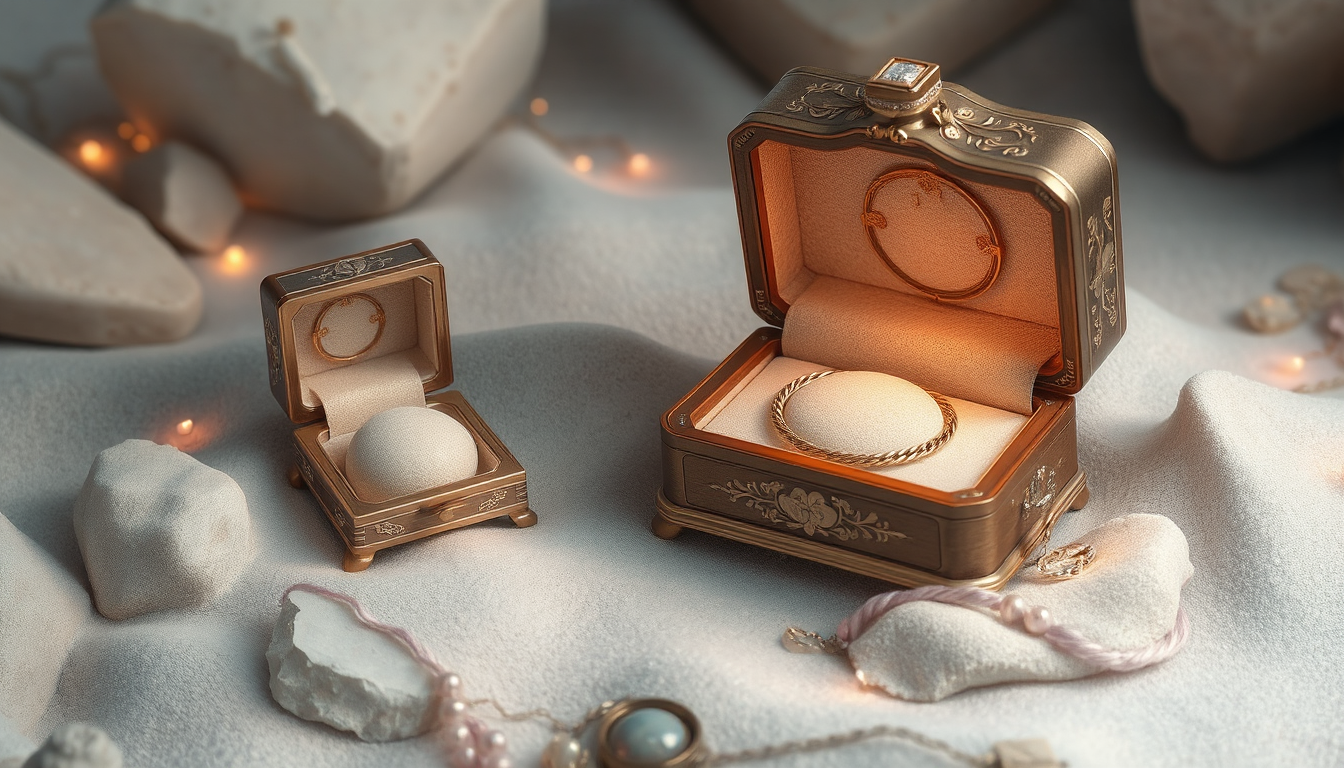
Before you can arrange, you must strategize. Many brands miss this step and go straight into the design phase, resulting in costly revisions down the line and packaging that does not perform optimally.”
This is the biggest step, this checklist. Answering these questions guarantees that your box reflects your product, brand, and customer.
1. What is your core brand identity?
Is your brand Minimal & Modern, Rustic & Handmade, or Opulent & Luxurious? Your box shows this identity. For instance, a minimalist brand might opt for a case pack in pressed kraft paper while a luxury brand might opt for a soft-touch black box with gold foil. Define your brand’s personality first.
2. What are the exact dimensions and needs of your jewelry?
Carefully measure your pieces, but also have a sense of their peculiar needs. Does a silver chain require an anti-tarnish insert? Does a dainty ring require foam to keep it snug on her finger? Inside the box is as crucial as outside the box. Don’t build a beautiful box that lets really bad stuff happen inside it.
3. What is the desired unboxing experience?
What do you want your customer to feel? Do you prefer a fast, blunt reveal or something more layered? The style of box you choose — a drawer box with a ribbon pull, say, or a two-piece box that lifts slowly — really influences that moment. See also: This digital experience is BUILDING BRANDS According to Forbes, people are swayed dramatically in their buying decisions and their perceptions of brands by the tactile experiences they have of packages.
4. Who is your target customer and what do they value?
Understanding your customer is key. Are they a green-minded young adult who wants a recycled box? Or are they a luxury buyer who demands a thick, keepsake-quality box? Aligning your packaging with your customer’s values allows you to connect with them and demonstrates that you get them.
5. What is your budget per box?
Be realistic and complete. Your cost per box is not just the manufacturing price, it is the design, shipping and storage as well. A complex box will be more expensive than a simple printed box. Knowing where you want to be budget-wise from the get-go helps you and your manufacturer make intelligent material and finish choices.
6. What are your quantity and fulfillment needs?
And initially, how many boxes do you need? The size of your order will determine which printing techniques are cheaper to use. Lastly, and considering your fulfillment process as well. Flat-packed boxes can save you money and storage headaches when you have a small team and limited space.
7. How will the box be used post-purchase?
No one throws out a good jewelry box. Is it strong and beautiful enough that customers will keep it on their dresser? When you design for reuse you’re designing with the intention of extending your brand within the home and reminding the customer, on a daily basis, that they are happy with the product or service.
Material Matters: Choosing the Right Foundation for Your Box
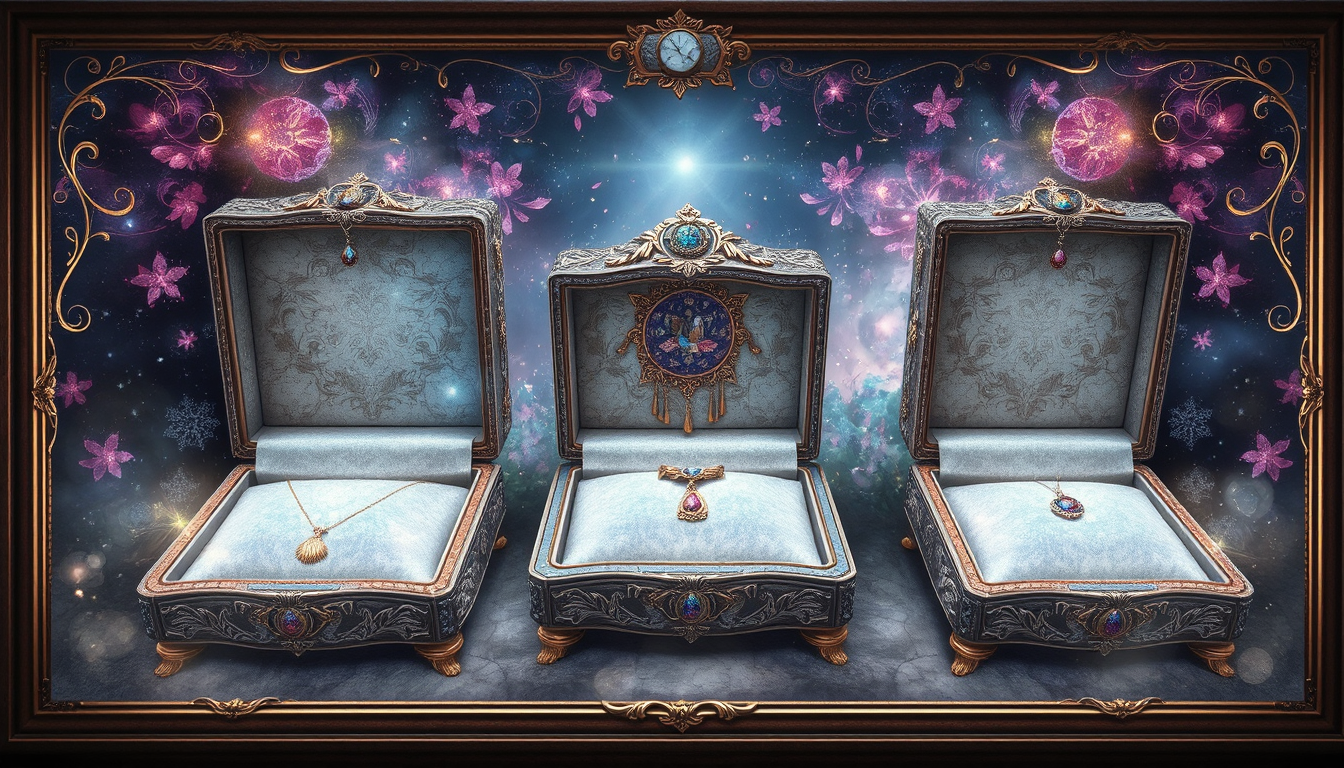
The material will dictate your box’s look, feel and strength. It impacts everything from how valuable it appears to the last price tag. To help you communicate with your supplier, here are the most frequent choices:
| Material | Description | Best For (Brand Vibe) | Pros | Cons |
| Paperboard (Cardstock) | A lightweight, single-layer paper-based material. It’s flexible and can be easily folded and printed. | Emerging brands, affordable luxury, subscription boxes. | Cost-effective, lightweight (saves on shipping), versatile for printing. | Offers minimal protection, can feel less premium. |
| Rigid Board (Greyboard) | A thick, dense paperboard that cannot be folded. It forms the core of luxury boxes and is wrapped with a specialty paper. | Premium and luxury brands, keepsake boxes, high-end gifts. | Extremely durable, high perceived value, excellent protection. | Higher material and shipping cost, not collapsible (unless designed to be). |
| Kraft Paper | An unbleached paper known for its natural, brown color and fibrous texture. | Eco-conscious, rustic, handmade, and minimalist brands. | Sustainable, strong, recyclable, provides a natural aesthetic. | Limited color palette, can be difficult to print complex, vibrant designs on. |
| Specialty Papers | Decorative papers used as a “wrap” over rigid board. Options include textured (linen, leatherette), metallic, pearlescent, and soft-touch finishes. | Brands looking for a unique tactile or visual experience. | Endless aesthetic possibilities, elevates a standard box. | Can significantly increase the cost per unit. |
| Wood | Materials like bamboo, walnut, or pine for premium, heirloom-quality boxes. | Ultra-luxury, bespoke, and artisanal brands. | Unmatched durability and perceived value, natural beauty. | Very expensive, heavy, significant production lead times. |
A Note on Interior Inserts
Never overlook the inside of the box. Inserts secure your jewelry and add a layer of luxury.
-
Velvet: A classic, known for its soft appearance.
-
Foam (EVA): Provides optimal protection, with exacting, rigidcutouts for a reliable fit. Sometimes it has a nap (a layer of protruding fiber) of velvet or suede.
-
Satin:A smooth, glossy finish gives this delicate fabric a luxurious feel.
-
Suede/Microsuede: A contemporary flat finish that is soft and luxurious.
The Art of Personalization: Finishes and Printing Techniques Explained
This is where your box starts to feel like your box. With the correct printing methods and last touch additions, your brand persona comes to life and is felt and seen by your customers.
Printing Techniques
-
Offset Printing: The gold standard for large volume print runs. It functions ink, and plates are used to transfer ink, so the reproduction accuracy and sharpness are high. Best for large amounts where consistency is paramount.
-
Digital Printing: Prints ink directly onto the box, like how a home printer works. It’s ideal for lower quantities, intricate multi-color designs, or when you need a quick turnaround.
-
Hot Foil Stamping: Metallic or pigmented foil is pressed in to the paper with a hot die. Adds a metallic sophistication that is perfect for logos, borders, and text.
-
Embossing & Debossing: Embossing is when a design element is raised up from the surface of the paper and debossing is when the design element is sunken into the paper. Both methods give a 3d effect which adds a refined, tactile nature.
Finishing Touches
-
Lamination (Matte vs. Gloss): Thin protective film applied to the box. The matte lamination gives this box a contemporary luxe feel with a soft velvet touch. Gloss lamination can make colors pop and generates a shiny reflective finish.
-
Spot UV: The application of a high-shine ultraviolet light (or UV) coating to targeted areas (such as a logo or pattern) on a matte surface. We suggest pairing a plain matte laminate whilst adding a touch of subtle spot UV logo to create a contrast and distinction that appeals to customers.
-
Closures: The Closures are a huge component of the unwrapping mechanics. Magnetic Closures release with a satisfying “snap”, making these boxes a premium option for your product, while ribbon tabs created for hinged boxes function as a gift-like detail to remove the product from the drawer.
The Sustainability Shift: Creating Eco-Conscious Custom Jewelry Boxes
Consumers today buy not just the product but also the brand values. According to a Nielsen study, 73% of global consumers say they would change their consumption habits to reduce their environmental impact. Responsible packaging is now a given.
Here are actionable steps to make pretty packaging that’s also accountable.
-
Choose Recycled & Certified Materials:Demand your paper supplier provide high post-consumer waste (PCW) paper. Search for materials that are certified by FSC (Forest Stewardship Council). This label ensures that the paper is sourced from forests that are responsibly managed to conserve biodiversity and the livelihoods of the people that depend on them.
-
Opt for Eco-Friendly Inks: Conventional dyes may be derived from petroleum. Ask for inks that are soy- or water-based, products that are kinder to the environment and make it easier to recycle the paper.
-
Embrace Minimalist Design: A thoughtful, functional design that optimizes for what is really needed can efficiently reduce the use of materials without sacrificing aesthetics. A nicely positioned logo on a lovely, plain box can be more impactful than a busy, full-printed design. It’s a bold and mature way to go.
-
Design for Reusability: That’s sustainability in its purest form. Make a box so great and strong that your customer will keep it FOREVER. A reusable box gives itself life, tangibly reduces waste, and is tangible to keep your brand in a customers mind daily.
Conclusion: Your Box is Your Brand’s First Hello
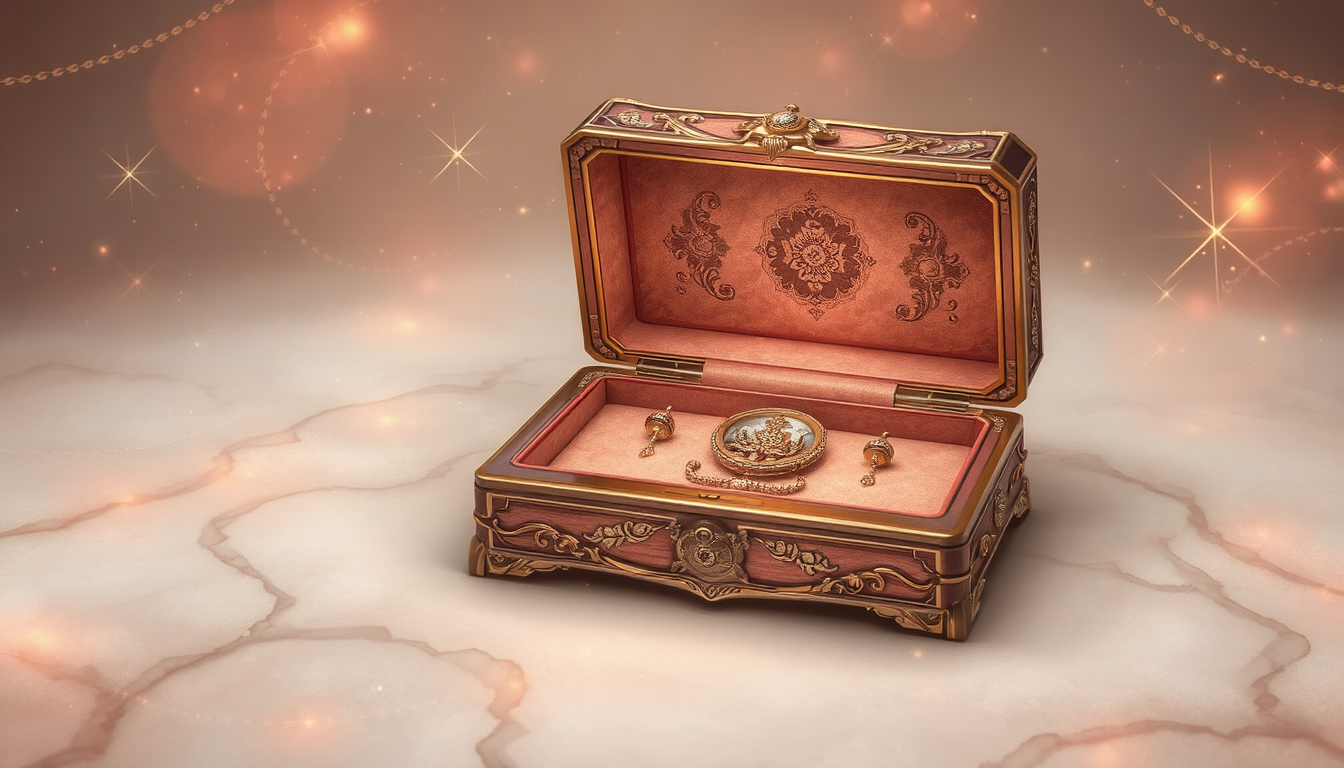
We have already covered why custom packaging is important and what shapes and materials to use, and now we’re walking you through the pre-design checklist and personalization. The way to great packaging is paved with more strategic decisions, not simply aesthetic ones.
Now, your custom jewelry box is not a box just but a messenger. It represents who you are, your values, your quality and attention to detail before the customer even sees the jewelry inside. It’s a critical investment in your brand’s story, and it’s essential to long-term customer relations.
And now, you have the record of how to create a custom jewelry box, one that not only houses your treasures but is really a representation of your brand. Use the checklist and create a packaging experience that your customers will never forget.
FAQ
-
What are the most popular styles of custom jewelry boxes in 2025?
2-piece rigid box, drawer box with ribbon pulls, hinged lid box and collapsible rigid box are among the trendiest box styles that offer different unboxing experiences. -
How much should I budget for custom jewelry boxes?
You will also need a budget for design, production, shipping, and warehousing. Premium materials such as thick board combined with specialty papers are more expensive than traditional paperboard solutions. -
What sustainable options are available for custom jewelry boxes?
Environmentally friendly solutions are FSC certified material, recycled paperboard, kraft paper, soy-based ink, simple design that use less material and still keep beauty and elegance. -
How do custom jewelry boxes increase brand loyalty?
Benefits of Custom Jewelry Boxes Even if you’ve never thought about the specifics of unboxing your product, using premium packaging can boost your perceived value, keep your branding in your customer’s house for longer, and narrate your brand’s story in a powerful way. -
What information should I prepare before designing my custom jewelry boxes?
Have ready your core brand identity, exact jewelry sizes, unboxing experience you’re after, the kind of customer you’re trying to attract with your box, budget per box, quantity required and how the box might serve you post-purchase.

